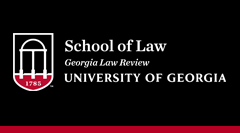Publication Date
2016
Abstract
First year law students are generally taught that the justiciability doctrines of standing and ripeness perform distinct functions that work together to help courts determine whether an Article III "case or controversy" exists in particular suits. The standing doctrine, it is said, assists courts in this inquiry by determining who can bring suit, whereas the ripeness doctrine assists them by determining when someone can bring suit. This theoretical distinction in the doctrines' functions is based on the original forms the standing and ripeness doctrines took. Over the course of the past century, however, the Supreme Court has altered the standing and ripeness doctrines to a point where the doctrines now seem to serve the same function-both address the propriety of the parties and the timeliness of the suit. This Note illustrates the convergence in function of the standing and ripeness doctrines over time and argues that because the doctrines no longer perform distinct, complementary functions with regard to justiciability determinations, only one is necessary. This Note further concludes that the ripeness doctrine should merge into the modern standing doctrine, with only the standing doctrine surviving. This conclusion is supported both by the Supreme Court's recognition of the similarity of the doctrines and its preference toward using standing to assess justiciability issues instead of ripeness, and a simple logical progression that illustrates the ripeness doctrine's present lack of usefulness in justiciability law. Although disposing of the ripeness doctrine may seem like a dramatic change to the law of justiciability, the benefit gained by reducing unnecessary complexity in justiciability determinations far outweighs the drawback of eliminating a doctrine that no longer serves a useful purpose.
Recommended Citation
DelGaudio, Michael A.
(2016)
"From Ripe to Rotten: An Examination of the Continued Utility of the Ripeness Doctrine in Light of the Modern Standing Doctrine,"
Georgia Law Review: Vol. 50:
No.
2, Article 9.
Available at:
https://digitalcommons.law.uga.edu/glr/vol50/iss2/9

